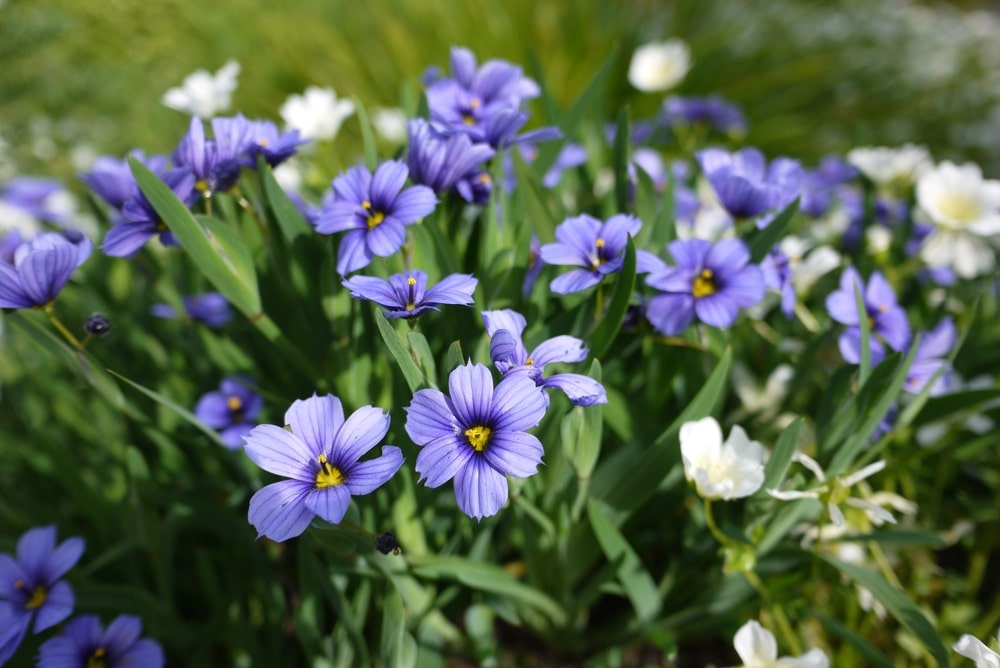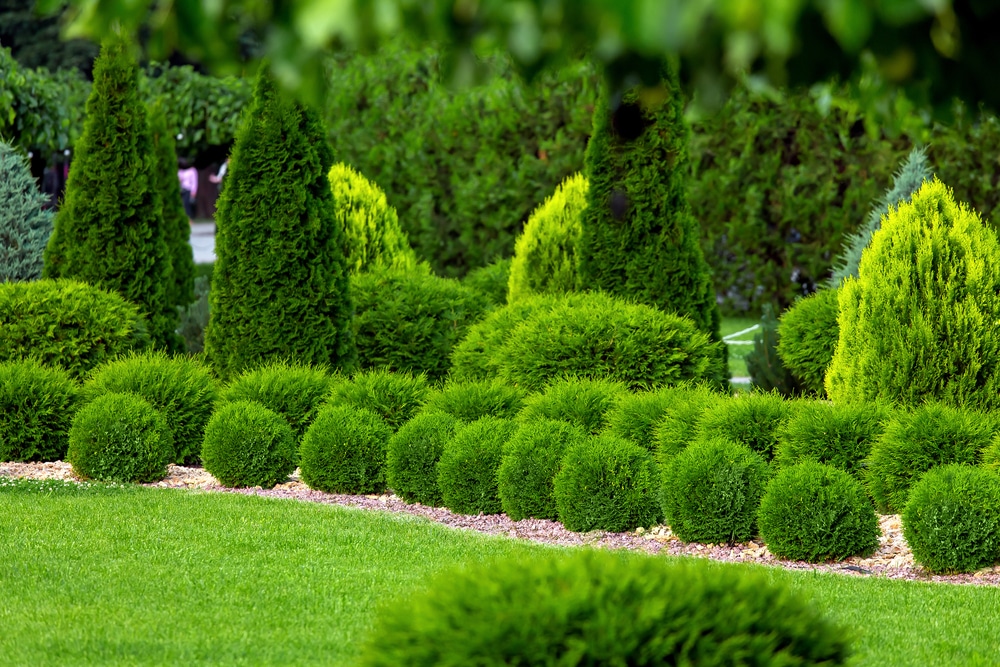Gardeners must know the difference between annuals, perennials, and biennials to plan and care for them properly. There are several differences between annual, perennial, and biennial plants. Here’s what they are.
The main differences between annual, perennial, and biennial plants are their lifespans, reproductive cycles, and physical qualities. Annual plants live for one year, perennial plants live for many years, and biennial plants live for two. This affects how they look and reproduce.
What Is An Annual Plant?

Annual plants (also called annuals) have a lifespan (from seed to producing seeds, then death) of one year. You typically grow annuals outdoors in pots, garden beds, or other outdoor areas on your property. These plants are commonly herbaceous or tropical and live until winter.
A herbaceous plant does not have woody tissue (called a woody plant). In other words, herbaceous plants have flexible stems.
Woody plants include trees and shrubs. Herbaceous plants include poppies, zinnias, and more.
A tropical plant is a plant that naturally grows between tropical latitudes (AKA, it’s in a tropical area).
What Is A Perennial Plant?

Perennial plants (also called perennials) survive many years, growing more roots, flowers, and leaves yearly. Perennials can survive harsh winter climates by going dormant (slowing down or halting normal plant activity) so they may reemerge the following growing season. Notably, “perennial” is typically used for herbaceous plants in gardening and landscaping (even though annual and biennial plants are herbaceous too).
What Is A Biennial Plant?

Biennial plants (also called biennials) have a two-year life cycle. Usually, biennial plants develop roots and leaves during the first year and grow their flowers and seeds in the second year. Unlike perennials and annuals, these plants live for two years.
Differences Between Annual, Perennial, And Biennial Plants
Perennial, annual, and biennial plants have a couple of key differences, including their lifespans, reproductive cycles, and physical qualities.
Let’s start with their lifespans and reproductive cycles.
Their Lifespans And Reproductive Cycles
Perennials, biennials, and annuals differ according to lifespan and seasonal patterns.
Perennial plants in non-tropical countries have a yearly growing period, flowering period, and either die or become dormant. They have a longer lifespan and follow specific seasonal patterns for flowering and dormancy.
Annual plants go through seed germination (when the plant comes out from its seed), vegetative growth (the growth process through their vegetative cells and tissues), flowering, and then death within one year. They have a shorter lifespan but make up for it with constant flower production or rapid growth.
Biennial plants have a two-year cycle, which includes seed germination, first vegetative growth, dormancy, second vegetative growth, flowering, and death. In other words, they have a two-year lifespan, with the first year focused on root and stem growth and the second year dedicated to flowering, seeding, and eventual death.
Physical Traits
Perennial plants often have leftover dead leaves from the previous season, like lavender or Hakone grass. In contrast, annuals have no prior season and typically bloom for longer, from April or May until September/October. However, the best way to distinguish them is by learning each plant’s qualities individually.
You can also consider the time of year. In winter, many plants are dormant and leafless; annual plants are only visible from May to November.
Similarities Between Annual, Perennial, And
Biennial Plants
All annual, perennial, and biennial plants have a life cycle that includes seed germination, growth, reproduction, and death. All these plants need nutrients in their soil and direct or indirect sun as their primary energy source.
Are Annual Plants Ever Perennial Or Biennial Plants And Vice Versa?
Depending on your area, some plants typically considered one type will instead be considered another. For example, usually, lavender is a perennial plant. However, you can think of it as an annual when you plant them in a pot next to a mandevilla or a potato vine. In specific conditions, perennial or even woody plants such as a spirea bush (perennial bush) would not survive winter, thus making them a year-long living plant, an annual.
This combination of terms might sound confusing initially, but sometimes gardeners call a perennial plant an annual plant if they expect plants to survive just one year.
Also, we commonly refer to all herbaceous plants as annual, perennial, or biennial. While you can also consider trees and shrubs, perennials, or annuals, tropical evergreen annuals like palms and birds of paradise will only survive the winter if you protect them indoors. It all depends on your climate region and the plant’s too.
What Are Some Good Plant Combinations?
The best plant combinations are not so much a match between annuals and annuals or perennials and perennials but matching plants sharing similar environmental necessities such as light, space, or watering.
For instance, I like putting coleus (an annual) at the back of my garden bed and coral bells (a perennial) at the front. Coleus grow taller quite quickly, and coral bells remain a small size. Both plants require a good amount of shade and similar watering schedules, depending on the soil, making them a good combination for each other.
That being said, allow yourself to be artistic with your plant combinations.
Are There More Plant Types Than These?

There are indoor plants, bulbs, evergreens, trees, and shrubs. But some plant classifications overlap. For example, a bird of paradise is an evergreen, tropical, indoor plant, and perennial. However, if you leave it outside in a planter, it would not survive and would practically be an annual.
Some bulbs, like tulips, can come back every year. However, this is only sometimes the case. For practical reasons, gardeners and horticulturalists (person who grows plants as a job, AKA practices horticulture) consider them annual or bulb-propagated.
The bulb is part of a plant that stores nutrients at the base of the plant and prepares the plant to emerge after dormancy in spring (so bulb-propagating is propagating, growing a new plant from part of another plant, from these bulbs).
Have fun and be creative instead of worrying about precise definitions and categories when gardening! However, it’s still important to be aware of the key traits of your plants and flowers to ensure their survival and growth.
Final Thoughts
Delving into the realm of plants may seem intimidating due to the specialized terminology used in horticulture and gardening. Nonetheless, with the proper guidance and perseverance, you will better understand the similarities and distinctions between various plants. Remember, you can consult a gardening professional or a skilled landscaper for further assistance.


